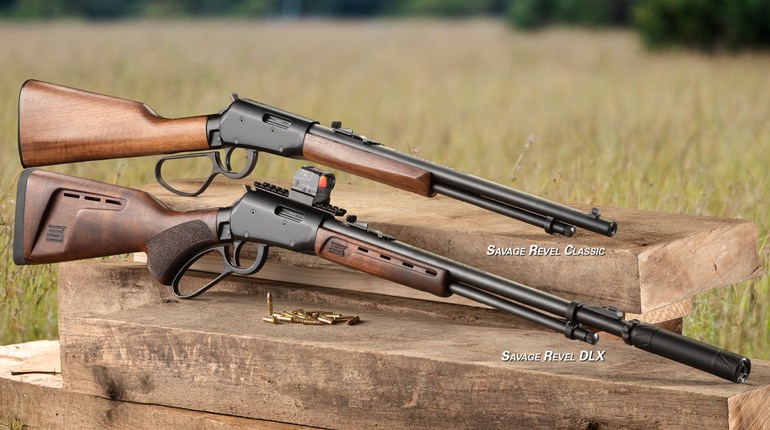
North American Arms’ (NAA) mini rimfire revolvers are easily recognized, including the latest NAA Ranger II. They’re tiny, with all-metal parts made of stainless steel and carefully fitted together. Barrel lengths and grip-frame shapes may vary, but they’re all fired single action and have a maximum capacity of five cartridges. They’re not exactly powerhouse handguns, but easily dropped in a pocket for a short outing. One of the negative comments on the little guns’ defensive capabilities focused on the difficulty of reloading.
On early models, you basically had to disassemble the gun and hold onto the three components while poking an empty case out of each chamber and inserting five fresh rounds. Following that, you had to replace the freshly loaded cylinder into the frame (without spilling any cartridges) and re-insert the cylinder pin. It’s not difficult in the serenity of a pleasant campsite, but there’s nothing quite like a life-threatening scenario to mess up your fine motor skills.
NAA has addressed the reloading issue with one of the coolest ideas I’ve seen in a long time. In the new North American Arms Ranger II break-top, its engineers simply sprinkled some Lilliputian dust on a 19th-century Schofield, shrinking it down to an ultra-compact .22-caliber pocket pistol. Place the hammer on half-cock and pull the frame latch to the rear (i.e. toward the hammer). When the frame latch clears the top of the frame, the barrel/cylinder will pivot freely to about a 45-degree angle, exposing the rear face of the cylinder. If you continue to pivot the barrel/cylinder another 70 degrees, the star will move upward pushing all five of the cases partially out of the chambers. Remove the spent cases and reload. I wouldn’t call it a speed load, but it’s much faster than a partial-gun disassembly and requires less fine motor skill. For a partial or tactical reload, the Ranger’s Schofield-like mechanism is a vast improvement over the gun’s earlier variants.
On the older mini-revolvers, the rear sight is cut into the solid topstrap above the rear of the cylinder. On the North American Arms Ranger II, a square notch is cut into the top of the frame latch. The front sight is a post with a rounded top, and it fits rather nicely into the rear notch to present a small-but-useful sight picture.

Also reminiscent of mid-19th-century blackpowder handguns, the NAA revolvers have a safety notch between chambers in which you can rest the hammer for safe carry. No need to surrender one of your five rounds to rest the hammer over an empty chamber. Getting the firing pin properly located into one of these safety/carry notches requires some practice, but hopefully you’ll be loading the gun in the serenity of your home rather than waiting for trouble to start.
NAA revolvers are available with two cylinders, one in .22 Mag. for defensive applications and one in .22 LR. Switching cylinders is simple but does require a modicum of coordination. The NAA website offers a variety of useful accessories, including some interesting holsters. You might also want to carry extra ammo in Tuff Products’ QuickStrips, which are available for .22-rimfire cartridges.

A couple of lessons were learned during range sessions. The little North American Arms Ranger II proved to be a handful. Groups ran from .414 to 2.76 inches regardless of the ammo used. I’d prefer a taller front sight since all groups printed above point-of-aim with the front sight buried in the rear notch. Not too big a deal, since for defensive purposes, this is basically a “get-off-me-” type pistol. But when you’re trying to keep those carnivorous pine cones more than a few yards from your camp fire, exact point-of-impact needs to be slightly more controllable.
During my second range session there were misfires with all three brands of.22 Mag. ammo. Learning to clear malfunctions is actually important training with a gun this small, as it’s very easy to cover parts of your hand with the muzzle. The failures occurred because I failed to clean the gun between range visits, and it was quite gritty on the second trip—never a good thing on any firearm, but perhaps even more critical on this small a handgun. Keep it clean.

Grips on the North American Arms Ranger II (and most of the NAA mini-revolvers) are quite small. Despite the revolver’s reduced size, it did tend to point naturally, but only if I utilized a two-handed firing stance with my support hand wrapped around my shooting hand.
I initially thought of the Ranger II as a handy backup gun, which can be tucked into almost any size pocket in almost any garment. It is especially useful when your primary carry gun might be inaccessible—like in a car with your seat belt strapped or in a crowded restaurant booth. A quick trip to the supermarket or to pick up a package doesn’t always motivate me to strap on my serious hardware, whether that’s because I’ll only be gone for a short period or because I don’t want to throw on concealment garments, a heavy-duty belt or a large holster just to run a quick errand. Having a gun is better than not having one, and the North American Arms Ranger II is a gun you can always carry.







































